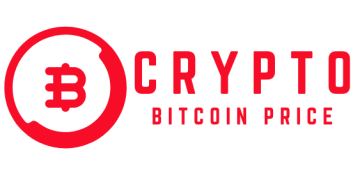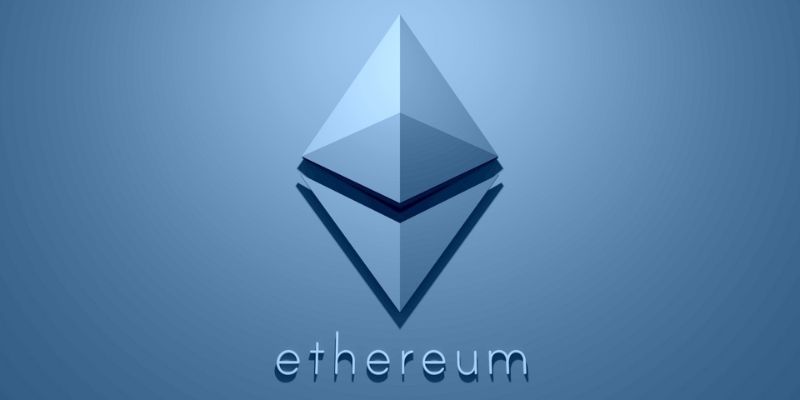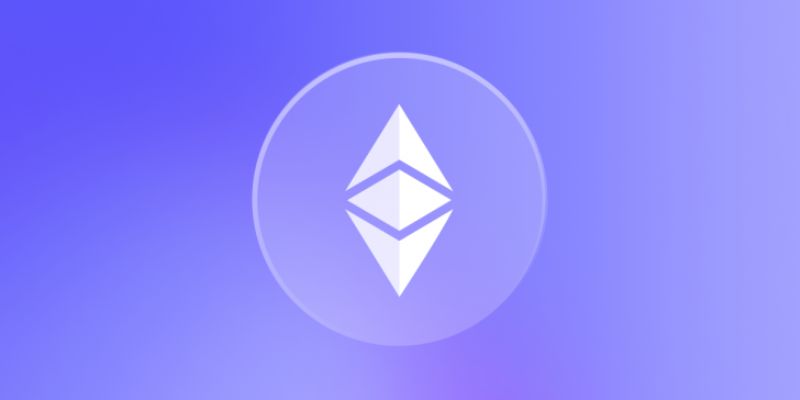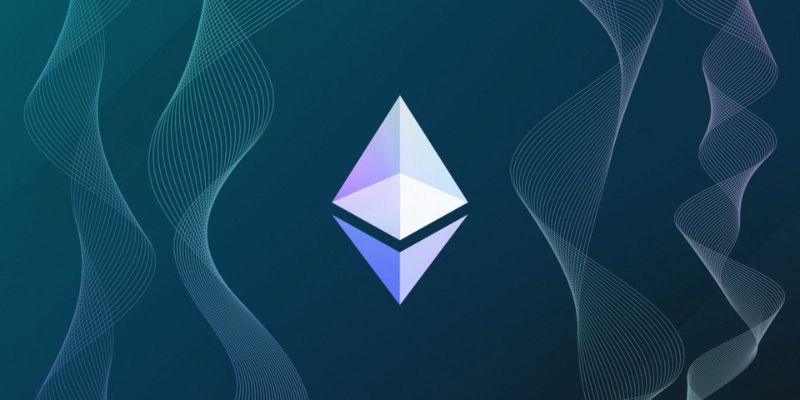Have you ever wondered What is Ethereum? Let’s dive straight into the world of digital wizardry where Ethereum is a leading player. It’s not just another digital currency; it’s a whole platform for building applications that could change how we do everything online. Imagine a digital universe where contracts execute themselves and apps run without any downtime.
That’s Ethereum for you—a space where the rules you thought you knew about the internet get a complete makeover. This guide shines a light on the Ethereum basics, the magic of smart contracts, and the powerhouse that is the Ethereum Virtual Machine. We’ll also look at Ethereum’s journey and how it’s gearing up for the future. Whether you’re here to learn, invest, or just satisfy your curiosity, get ready for a simple but comprehensive rundown packed with practical insights.
Exploring the World of Ethereum: The Basics Unveiled
What Exactly is Ethereum?
Ethereum is like a huge, global computer made by many people. It’s not just for swapping money. It does much more. Ethereum lets you make deals with strangers, safely and without a middle man.
You can think of it as a carnival, where anyone can set up a game. But in this carnival, you can trust all the games. This trust comes from smart contracts, which are like promises locked in unbreakable digital code.
The Functionality of Smart Contracts and dApps
Smart contracts are like vending machines. You pick what you want, pay the price, and get your item. All this without a shopkeeper. Smart contracts handle money, property, shares, or anything valuable in a clear way. This is a huge deal because now anyone, anywhere, can trade without worrying about being tricked.
Decentralized apps or dApps use these smart contracts. They live on Ethereum and work without any one person or group in charge. Think of playing a game where no one can switch off your fun. No single person holds the power. And if you make something cool, you can earn money every time someone uses it.
With Ethereum, you can also be part of new ideas like virtual art, collection items, and games. All of these can be owned for real, thanks to something called the blockchain. It’s like a long list that everyone can see but no one can rub out or change.
Buying Ethereum means getting a piece of this giant, world-changing machine. With ETH, the digital money of Ethereum, you can join this movement. You need ETH to use Ethereum. It’s like fuel for this machine. You can store ETH in digital wallets, use it to pay for things, or save it as an investment.
Mining ETH used to be a way to help keep Ethereum running and get paid. People used expensive computers to solve puzzles and this process created new ETH. But this needed lots of power, so Ethereum is changing things up.
Now, Ethereum aims to use a new way called proof of stake. This means, instead of using lots of electricity, people will lock up some ETH to help keep things safe. This uses less power and is better for our planet.
So, that’s the starter info on Ethereum, where anyone can invent, share, and make a difference. It’s like an always-open playground for creative techies. Ethereum is growing and might change how we all do things in the future. But remember, all new things have risks, so learn lots before you dive in!
The Technical Realm of Ethereum: Under the Hood
How the Ethereum Virtual Machine (EVM) Operates
Let’s dive into the heart of Ethereum, the Ethereum Virtual Machine, or EVM for short. Think of it as the brain of Ethereum. It runs the show, managing all operations on the network. It’s where all Ethereum accounts and smart contracts live. The EVM is key to understanding Ethereum. Each node on Ethereum runs a copy of the EVM to maintain consensus.
This means they all agree about the state of every account and every contract. It’s this agreement that makes the system so strong. Smart contracts are written in programming languages like Solidity. Think of these as the rules or instructions that self-execute when certain conditions are met. They’re the mighty tools that power dApps, or decentralized apps. These apps run on the blockchain. They are free from control by a single person or group.
EVMs ensure every Ethereum node agrees on the outcome of each contract. They do this by following the same set of rules. This is why Ethereum can run without any central power. It’s a well-oiled machine where trust is not in one person, but in the math and code.
The Intricacies of Ether Transactions and Wallets
Now, about Ether transactions and wallets. Ether (ETH) is Ethereum’s native token. Think of it as the fuel for the EVM – it’s used to pay for transactions and smart contract operations. This fuel is what we call gas. Gas fees change with demand on the network. More demand means higher fees, as users pay more to have their transactions processed first.
For each Ether transaction, you need a wallet. Wallets keep your ETH safe and allow you to send, receive, and manage your funds. They work like internet banking but without the bank. You get a public key, which is like your account number, and a private key. Your private key is like your PIN – never share it. It’s how you approve transactions and keep your ETH secure.
Each transaction includes details such as the sender’s and receiver’s address and the amount of Ether to send. It’ll include the gas price, too. Once you send a transaction, miners on the network process it. They use powerful computers to solve complex math puzzles. This process is what we know as Ethereum mining. With the upcoming switch to Ethereum 2.0, mining will make way for staking, which uses much less energy and is more eco-friendly. It means you can participate in network security by holding and ‘staking’ ETH instead.
Understanding these aspects of Ethereum is crucial. It’s not just about buying Ethereum. It’s about seeing how it works under the hood. Once you get that, you can really grasp the magic of this platform. It’s a powerful mix of tech and vision. It promises a future where you have more say over your data, your money, and the rules of the game.
The Evolution and Future of Ethereum
From Proof of Work to Ethereum 2.0: The Shift to Proof of Stake
Imagine a train changing its engine while still running. That’s Ethereum as it moves from Proof of Work to Proof of Stake in an update known as Ethereum 2.0. This change is huge. It’s like going from gas to solar power. In the Proof of Work model, we have computers around the world solving puzzles to secure the network, like a giant game that uses lots of power.
But there’s a better way. Proof of Stake cuts the power use by having people lock up some of their Ethereum to earn the right to validate transactions. Think of a casino, where only the best players get to deal the cards by staking their chips. This makes everything faster, cheaper, and greener.
Scaling Innovations and Ethereum’s Roadmap
How does something grow but stay smooth and fast? That’s the question for Ethereum as it plans to scale. It’s like when too many cars hit a two-lane road, things slow down. To fix it, Ethereum is adding new lanes, or layers, to handle more action. These innovations don’t just make room; they also keep everything secure while letting new ideas hook in more easily.
Scaling is vital because, as Ethereum gets more popular, it can’t get bogged down. Think of a shopping mall on Black Friday. Unless there are plans to handle the crowd, it’s chaos. Ethereum’s roadmap lays out these plans to keep things in order. With each step, it brings more people in without losing a beat.
This future may sound far-off but remember, Ethereum began just years ago. In that short time, it’s grown like a city from a small town. The move to Ethereum 2.0 and beyond isn’t just a new phase. It’s a whole new day, promising a cleaner, leaner, and more powerful Ethereum that’s ready for tomorrow and the days after.
Investing and Using Ethereum: Practical Insights
Evaluating the Ethereum Marketplace
When you’re eyeing the Ethereum marketplace, it’s like stepping into a digital bazaar. Here, the goods are diverse and plentiful. Ethereum, the platform’s backbone, powers everything from computer programs, called smart contracts, to websites without a single boss, known as decentralized applications or dApps. This world runs on ETH, Ethereum’s own currency.
Think of ETH like tokens at an arcade. They let you play the games, sure, but in Ethereum’s case, the games are these smart contracts and dApps. Buying Ethereum gives you a stake in this vibrant digital economy. What’s more vital is understanding Ethereum’s market cap. This number helps us see its worth compared to others and signals how many people trust and use it.
How to Utilize Ethereum in Daily Transactions
Imagine being able to send money, buy a song, or even vote online without red tape or a middleman. That’s Ethereum’s promise. Its tech lets you make deals direct with the other person. You can say goodbye to the bank holdups and hello to speedier, clearer transactions. All you need is an Ethereum wallet, a digital keychain for your ETH and a way to talk safely to Ethereum’s network.
By now, you’re probably wondering how Ethereum works day to day. Let’s say you want to buy something online. First, you send ETH from your wallet. This uses gas fees, small payments to reward the people who keep the network buzzing. It’s like a shipping fee for your digital goods. Ethereum’s ledger, a humongous book of records, notes down your deal. This way everyone knows it’s legit and the seller gets paid.
Ethereum technology may sound like it’s all virtual, but its impact is very real. Plus, it’s only getting more rooted in our lives as it grows and changes. The Ethereum community is just amazing, full of smart folks who are pushing the platform to new heights every day. They work to make Ethereum smoother, faster, and more open for everybody. And with Ethereum 2.0, things are set to rocket even further, shifting from proof of work to proof of stake. This is not just eco-friendly; it means anyone with ETH can help secure the network.
There’s something thrilling about being part of the Ethereum adventure. With every Ether transaction, you’re weaving your thread into a huge tapestry of technology, finance, and community spirit. So when you’re investing in Ethereum or using it, remember that you’re participating in something extraordinary. You’re helping to write the history of the internet, one block at the time. And that, folks, is the kind of magic that Ethereum is all about.
So, we’ve dug into the exciting world of Ethereum, uncovered its basics, and peeked under the hood. We learned about smart contracts and how dApps work. Then, we saw how the Ethereum Virtual Machine makes everything tick, and we looked at how Ether transactions happen.
We also explored Ethereum’s big changes, like moving from proof of work to proof of stake in Ethereum 2.0. This change could make Ethereum faster and use less power. Plus, we found out about upcoming updates that might make Ethereum even better.
For folks thinking about Ethereum, whether to use it day-to-day or as an investment, we covered how to check out the marketplace and use Ethereum practically.
Thinking about all this, Ethereum isn’t just another tech trend. It’s reshaping how we deal with digital stuff and could make a huge splash. It’s not perfect and there’s lots to work out, but its future sure looks bright. It’s one tech journey worth keeping an eye on.
Q&A :
What exactly is Ethereum?
Ethereum is an open-source, blockchain-based platform that enables the creation of smart contracts and decentralized applications (DApps). It features its own cryptocurrency called Ether (ETH). Ethereum is designed to be programmable, allowing developers to create operations not just limited to peer-to-peer transactions, but more complex contractual agreements without the need for intermediaries.
How does Ethereum differ from Bitcoin?
While both Ethereum and Bitcoin are based on blockchain technology, they serve different purposes. Bitcoin was created as a digital alternative to money and is primarily a medium of exchange and a store of value. Ethereum, on the other hand, provides a platform for running decentralized applications and smart contracts, and its token, Ether, is used to power these operations.
Can Ethereum be used as a currency?
Yes, Ethereum’s native token, Ether (ETH), can be used as a form of digital currency for transactions. However, Ether serves a dual purpose as both a digital currency and as gas for powering smart contracts and transactions on the Ethereum network, distinguishing it from other cryptocurrencies like Bitcoin.
Is Ethereum safe to invest in?
As with any investment, investing in Ethereum carries its own set of risks and rewards. Ethereum is considered a volatile asset class, and its value can fluctuate widely. Potential investors should conduct thorough research and consider their risk tolerance, investment goals, and consult professional financial advice before investing in Ethereum.
What are the future prospects of Ethereum?
Ethereum has a robust roadmap, including the Ethereum 2.0 upgrade, which aims to improve scalability, security, and sustainability of the network. These developments have the potential to enhance its functionality and adoption. As with any technology, however, future prospects are subject to change and depend on several factors including technological advancements, market trends, and regulatory environment.





